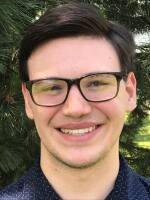Representatives from the California-based gunfire location company ShotSpotter visited Peoria last week to field questions and present a new initiative at the March meeting of the Peoria Safety Network.
Senior Director of Trauma Response and Customer Success Alfred Lewers, Jr. says the company’s “Data for Good” initiative is an attempt to use the mountain of data collected by ShotSpotter to help direct effective assistance in communities.
He says the company assembled a separate team from their normal operations to focus specifically on the initiative.
“ShotSpotter has more gunshot data than any other entity in the United States related to days of the week, hours of the day and repeat gunfire locations, we've realized that there needs to be done to use that data with key stakeholders,” said Lewers. “To bring resources to bear to take a more holistic approach to addressing the root causes of problems in communities.”
An example Lewers offers is marking schools near a high amount of gunshot incidents for additional mental health support for the children there.
“On a precision basis, they are bringing services to communities that have been historically underserved, and unfortunately, sometimes over policed,” he said. “We're trying to change the narrative and make for healthy communities by getting to the root causes, and not just using guns and badges to address the issues and communities impacted by gunfire.”

Peoria may add “Data for Good” to their contract with ShotSpotter when the contract is up for renewal in April. Lewers says the program won’t add any additional cost to the subscription.
“The professionals who are part of our team, being able to connect cities, with additional technical support, whether it's through the DOJ COPS Office, whether it's through the Bureau of Justice Assistance, whether it's existing entities,” he said. “There's no additional costs for this initiative in Peoria.”
The initiative will also include some more public facing data, the Peoria Police Department says there’s going to be a “ShotSpotter” tab with some form of “dashboard” on their website soon, but the exact details are still being worked out.
Lewers also fielded questions from the Safety Network on the basics of ShotSpotter and how it operates. He says the company’s acoustic sensors, which currently cover a six square mile radius area of Peoria, activate when a sound over 120 decibels occurs nearby.
“Once the system detects that information and does multilateration or some people may call it triangulation of the sound, it sends it to a cloud based classifier and location server that comes up with an x and a y coordinate and basically an address,” said Lewers. “From there it goes to our incident Review Center.”
At the Incident Review Center, trained ShotSpotter employees add tags to the sound like “multiple shooters” or “high capacity” before passing the information along to local police officers. Lewers claims the whole process takes around 30 to 45 seconds.
Though Lewers says employees are trained to be able to distinguish between gunfire and other loud noises, like fireworks, artificial intelligence also aids the company for events like New Year’s Eve.

“New Year's Eve and July 4, we consider our celebratory gunfire, reduction of celebratory gunfire periods,” he said. “We do rely more heavily on artificial intelligence to assist us because of the sheer volume.”
Lewers says the company’s standard contract promises 90% of audible, outdoor, non-suppressed gunfire above a 25 caliber detected and relayed in 60 seconds or less with a location accuracy of within 25 meters.
Of course, microphones placed around a city can raise concerns of privacy. Lewers says the company takes the matter very seriously.
“A couple of years back we actually commissioned an audit through the privacy commission at New York University,” he said. “And they looked at how we were operating as a company and they made some suggestions on making some changes.”
Lewers says the audio sent to officers was shortened from six seconds before and after the gunshot to one second. He says hearing a barking dog, screeching tires or other ambient noise on the recordings is a “unique circumstance.”
“We don't want communities to be overly or to have a greater chance of having acoustic surveillance as something that they're victims of,” he said. “We're trying to detect gunshot activity.”
Peoria Mayor Rita Ali says there is an upcoming presentation from ShotSpotter to the City Council, where the general public will be able to learn more about the technology and company ahead of the renewal decision in April. There’s no specific date set for this presentation yet.


